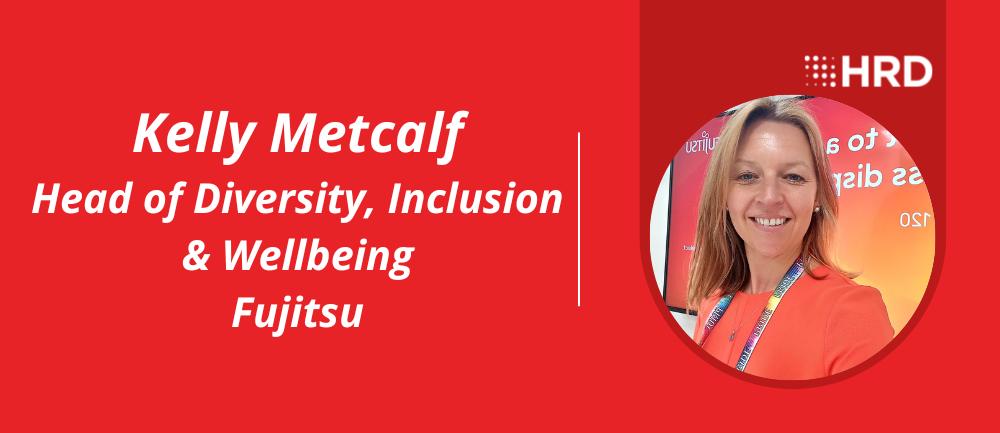Embedding workplace wellbeing: Shifting from reactive to proactive strategies
- 5 Min Read
Kelly Metcalf, Head of Diversity, Inclusion and Wellbeing at Fujitsu, argues that there is a retention and competitive imperative for organizations to take the necessary steps to sustain high levels of wellbeing.
- Author: Kelly Metcalf
- Date published: Feb 8, 2023
- Categories

It’s been almost three years since the pandemic flipped our working environments on their head, precipitating a complete transformation in the years that followed. Businesses had to change rapidly – and so too did employees.
The disruption, however, has not yet finished, with change now a constant, and often stressful part of working life – particularly during this period of ever-worsening economic conditions and uncertainty.
Indeed, recent data from a Chartered Management Institute (CMI) study found that nearly three-quarters of managers (71%) had seen evidence of the cost-of-living crisis increasing stress and anxiety for their teams.
It is a stress that has perhaps been exacerbated by the recent transformations: when people work remotely, their feeling of connection to the wider organization can diminish. Which is why purpose is increasingly becoming a defining quality, especially among younger generations. So much so that EY cites that 74% of Gen Z staff say they’d likely quit their current role if they found a job with greater purpose.
2023 will be another challenging year, and organizations must think now about the steps they can take to keep employees invested and sustain their long-term wellbeing.
A new set of challenges
In addition to being the right thing to do, there is a retention and competitive imperative for organizations to understand the wellbeing of their people and take the necessary steps to sustain high levels of wellbeing.
In fact, the focus has shifted from addressing immediate needs, stresses and challenges caused by the pandemic, to creating a workplace that continually nurtures and supports the wellbeing of employees. Findings from Microsoft revealed that over half of employees are now more likely to prioritize health and wellbeing over work than before the pandemic.
Since remote work became the norm for many, with it came a new and continuing set of challenges such as social isolation, work-life in-balance and a growing sense of disconnection.
But prevention can only come from having a proactive approach to employee wellbeing. Without this, companies will struggle to address the sense of isolation that employees can be exposed to with increased remote working, nor will they be able to foster a work environment that enables employees to thrive and contribute to the success of the organization.

Embedding wellbeing
Part of improving the overall mental health and wellbeing stance of an organization is to embed wellbeing more formally into company policies and practices, developing guidelines and tailored programs that are specific to the needs of the organization and its employees.
A key part of this is recognizing that all employees are individuals and there is no one-size-fits-all approach. That means taking a holistic and inclusive approach to employee wellbeing; recognizing individuals’ diverse needs and offering bespoke policies. It requires line managers engaging with education and training that enables them to support their teams by knowing each of their employees as individuals, understanding their unique needs and challenges, and being able to provide tailored support.
Organizations must also have a strategy for flexible working and maintain strong connections with employees working virtually. Providing access to wellbeing resources and tools to build wellbeing into their working day, such as blocking regular ‘focus time’ with Microsoft Viva Insights, agreeing healthy work practices at a team level and ensuring offices are a compelling place for people to connect in person to benefit their social wellbeing.
Elsewhere, it’s essential for organizations to keep on top of and understand the financial struggles employees may face this year. Organizations should consider providing resources to help financial literacy, such as budgeting, managing debt, and building financial resilience. Proactively looking at current partnerships and working with your benefit providers are great ways of offering such support. And with CMI’s findings on how the cost-of-living is impacting talent, addressing these financial challenges – for the wellbeing and productivity of employees – will play a role in the success of any organization.
But employees too need an environment that offers fulfilment and purpose to their day-to-day job. This is a relatively new task for HR. When employees crave the feeling of being a part of something bigger than just their individual contribution then inclusion can play a significant role. This boils down to leaders behaving in an inclusive way, setting the tone for line managers and that pervading right through the organisation. Yet, organisations need the right insights to get started.
Gaining valuable insights through data
Measurable data, such as retention rates, absence, usage of employee assistance programs is the bedrock of many HR functions. However, relying solely on data can provide a limited understanding of employee wellbeing. To effectively address the wellbeing needs of their employees, organizations should use a combination of measurable data and people’s experiences.
Gathering employee experiences and perceptions through pulse surveys, exit interview feedback and a network of Wellbeing Champions can provide valuable insights into the wellbeing of an organization’s workforce. With the right questions, organizations can assess employee engagement and satisfaction, and identify any trends that may be affecting employee morale and wellbeing.
By combining various sets of data, organizations will uncover a comprehensive understanding of the workforce and identify areas where they can focus their wellbeing efforts. This approach will enable organizations to create effective and targeted wellbeing programs that address the specific needs of their employees.
Developing a sustainable business model
It is important for organizations to understand that supporting employee wellbeing is not a one-time, big change, but rather a continuous effort made up of many small actions. That’s why continuously using data and employee experiences to monitor for wellbeing changes or areas of improvement will be critical.
Employers need to show up for talent, be purposeful in sustaining wellbeing and delivering a positive employee experience. These are the employers that will benefit from greater belonging and connection and ultimately be successful in retaining great people – and ultimately this is essential to contribute to the long-term success of the company.









